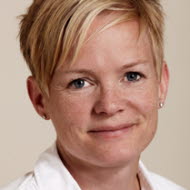Co‑working Environments for Innovation and Entrepreneurship in Rural Settings
In the context of sparsely populated mountainous regions, the aim is to address the question: How should a Co-Working Space (CWS) be designed physically, socially, and technologically to support innovation, entrepreneurship, and business development in rural areas?
In a Swedish context, the concept of Co-Working Spaces (CWS) as a support for entrepreneurship in peripheral areas is particularly relevant. A significant portion of the population in Sweden resides and operates in rural regions. One such example of a peripheral area with extensive rural landscapes is the Jämtland/Härjedalen region. This region faces significant challenges, including substantial social and geographical distances, difficulties in ensuring comprehensive digital connectivity, and a lack of business clusters or urban centers. These conditions can hinder innovation and entrepreneurship, especially for young small businesses that often rely on partnerships for success. Despite these challenges, Jämtland/Härjedalen is characterized by a strong entrepreneurial spirit, with many small businesses.
In peripheral regions, CWSs, where innovators and entrepreneurs can collaborate, can serve as a means to connect various stakeholders with complementary knowledge, thus creating density, fostering new relationships, and providing opportunities for resource sharing. Several CWSs have also emerged in Jämtland/Härjedalen.
A central question for this project is whether CWSs for entrepreneurship and innovation in rural areas should be based on a different logic tailored to the periphery, rather than copying the models established for CWSs in urban environments with different conditions (e.g., the tech sector in Silicon Valley). This project aims to answer such questions by examining the driving forces behind the creation and use of existing CWSs in rural areas. It also aims to develop an ideal design that will be tested and evaluated during the project period
The answers to this question form the basis for the main components of the project:
- Narratives explaining the driving forces behind the establishment and use of CWSs in rural areas. The project's multi-stakeholder perspective gives voice to individual entrepreneurs and those who have initiated and/or manage CWSs in rural areas, including insights into important policy-level drivers.
- An ideal design that describes how the physical, social, and technological environment should be created to establish CWSs for entrepreneurship and innovation tailored to rural conditions.
- A prototype of a CWS where the ideal design is implemented and tested. The prototype will be set up on a farm in a small village in the sparsely populated area of Jämtland.
Facts
Project period
220501—250531
Partners
- Nordhallen Observations AB
Departments
Subjects
Project leader

Project members

